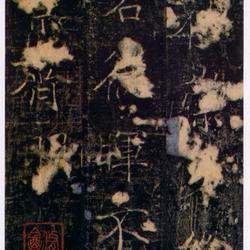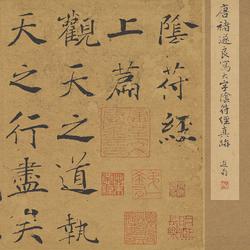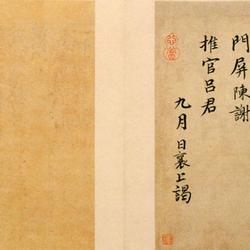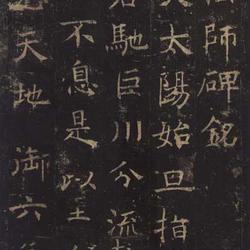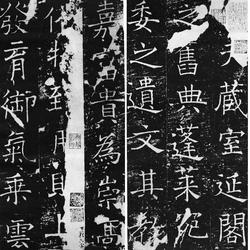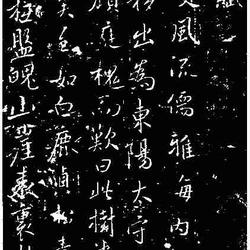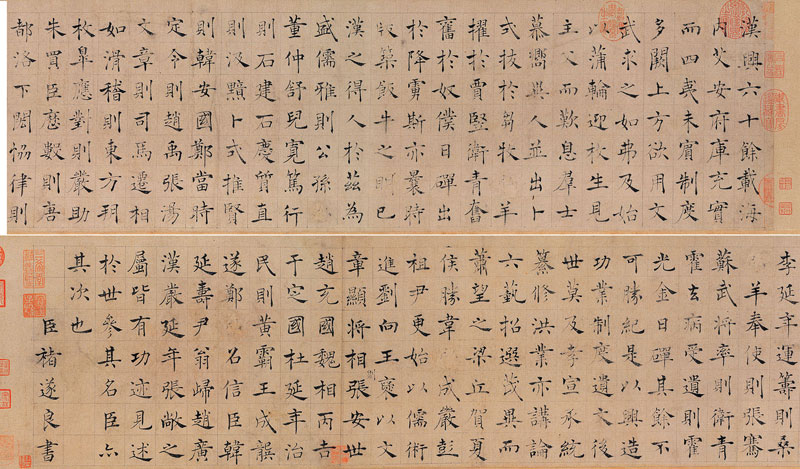
Chu Suiliang's "Ni Kuan Zan" in regular script 24.6x170.1 Collection of the National Palace Museum, Taipei
It is said to be Chu Suiliang's regular calligraphy calligraphy of the Tang Dynasty. "Shiqu Baoji" records: The height of the post is seven inches and seven minutes, the width is five feet, two inches and seven minutes, with a total of fifty lines and seven full lines. According to Zhao Mengjian's postscript, it was written by Chu Suiliang in his later years. At the back of the volume are postscripts by Zhao Mengjian, Deng Wenyuan, Liu Guan, Yang Shiqi, Qian Pu and others. Zhao's postscript said: "Rong Yi is graceful, like a man who has attained the Tao, and there is no trace of the worldly world." The Ming Dynasty Zhan Jingfeng's "Xuanlanbian" said: "It is dry but not moist, and lacks natural interest, and the writing is like fresh energy. But it is really weak." Zhang Chou's "Qinghe Painting and Calligraphy Boat" of the Ming Dynasty said: "Chu Henan's "Ni Kuan Zan" is the Song Dynasty Lin edition, and later Zhao Zigu and other seven postscripts are authentic." There are photocopied editions in circulation.
The strokes of the calligraphy in this volume are sparse and thin. During the stroke, there are thick and thin strokes. The posture of the calligraphy is graceful, graceful and beautiful, making people feel like they are facing a spotless, pure and unconventional scholar. Ni Kuan (? - 103 BC), a native of Qiancheng. He is good at handling legal cases. When Emperor Wu was in power, he was credited with water conservancy construction and the formulation of the calendar.

